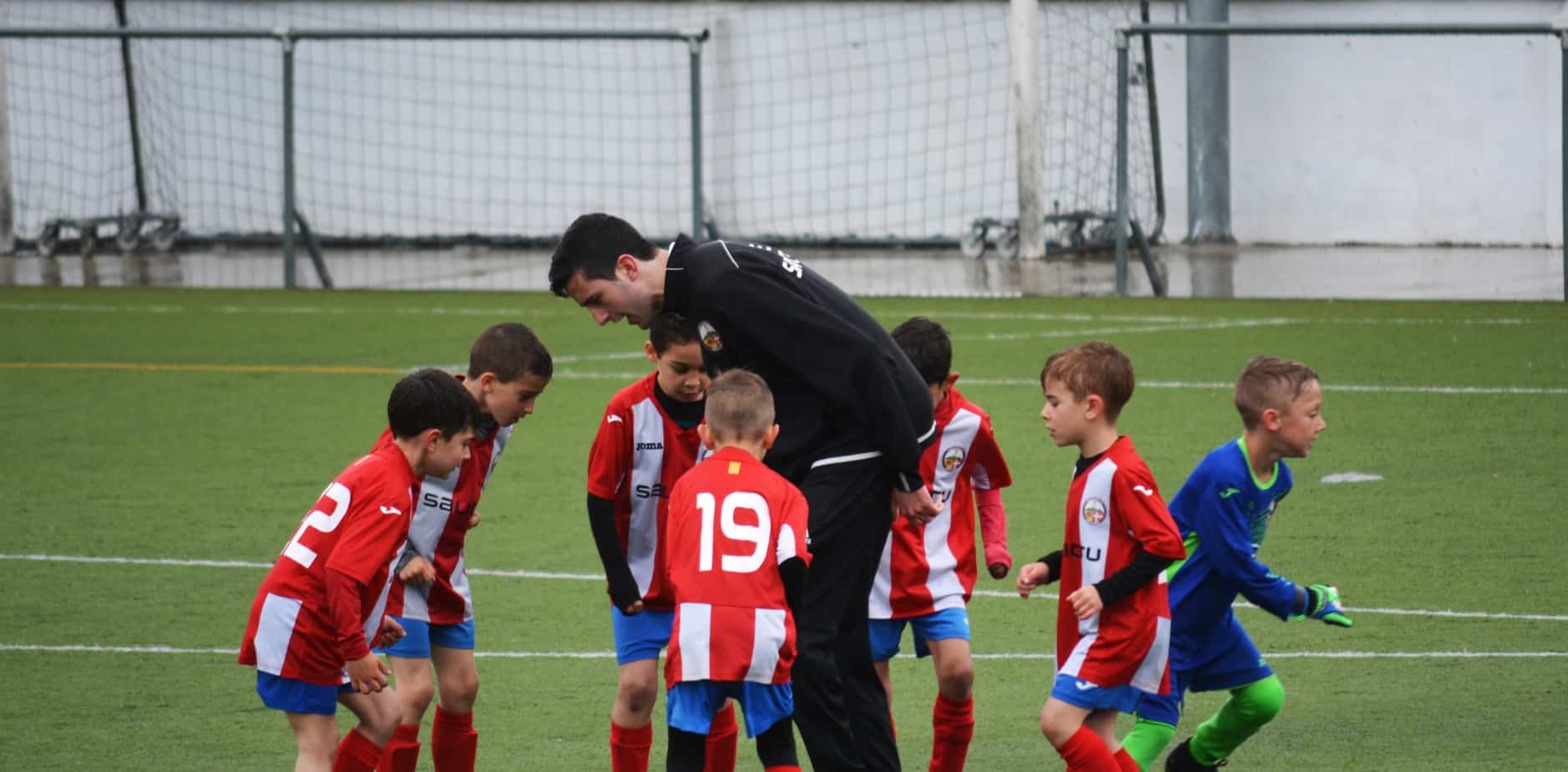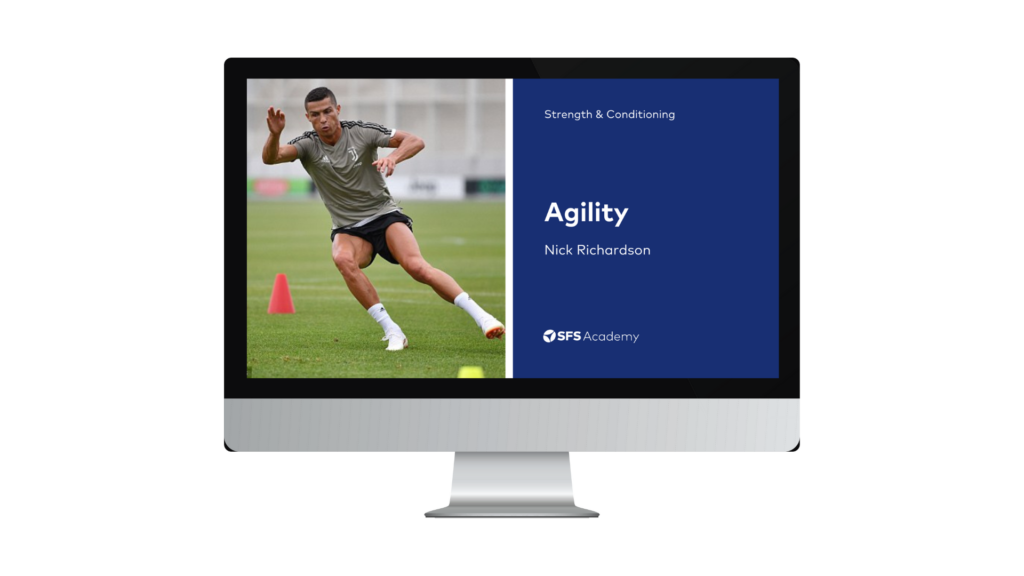Contents of article
- Introduction
- What do S&C coaches do on a daily basis?
- Roles and responsibilities of an S&C coach
- What’s an average day for a S&C Coach?
- Does a S&C coach work with athletes?
- Summary

Introduction
The role of the strength & conditioning (S&C) coach has typically been well defined as one that supports the athletic development and sports performance of competitive athletes (5).
This is a broad statement, but the specific roles and responsibilities may include a gym and pitch-based program design and delivery, athlete evaluation and monitoring, accompanied by extensive individualised reporting and warm-up and cooldowns for training and match play (1).
Due to the diverse range of responsibilities, the S&C coach needs to have a broad skill set and is essentially a master generalist. This raises the question – what do S&C coaches actually do?
As part of this article, a short online survey was conducted with 35 S&C coaches working in elite sports to establish an understanding of what they actually do as part of their daily routines. The statistics presented in the ‘What we know Vs. What we do not know’ section is taken from this survey.
Therefore, this article will discuss some of the well-known responsibilities, but also some of the lesser-known roles, duties and expectations which tend to fall under the small but significant phrase at the bottom of many job adverts ‘and all other duties as assigned by the organisation’.
What do S&C coaches do on a daily basis?
The daily tasks for S&C coaches can vary greatly depending on whether you work in a team or individual sport, the level of the club or athlete, what resources and facilities are available, how much of your time has been contracted and perhaps most importantly the club or athlete culture.
Some clubs adopt the All Blacks type philosophy of ‘always sweep the sheds’ whereby an inclusive team approach towards menial non-performance tasks such as filling water bottles, carrying equipment and tidying the changing rooms after training and matches (4).
Whilst other clubs prefer for the staff to take care of all logistical tasks in order to remove all other non-performance-related considerations for the players. It relates heavily to the culture the leadership are nurturing and their individual expectations of you.
Roles and responsibilities of an S&C coach
It is important to determine what clubs’ and organisations’ expectations are of the S&C coach and their roles and responsibilities. These can alter significantly based on the variables presented above, so in order to gain a clearer understanding of what an organisation wants and expects from an S&C coach, 5 job descriptions were coded to identify essential responsibilities. The job descriptions were taken from elite-level organisations and clubs including an institute of sport, Rugby, Football, University Elite Program, and Basketball.
Below are 5 common tasks or duties that appeared on all job specifications in exact or similar terms.
- Design of periodized weight room training programs, including the coaching of all sessions.
- Delivery of on-field/court conditioning in addition to gym-based coaching
- Administer and subsequently maintain detailed, accurate and updated records of athlete testing and monitoring, to be presented to the coaching team periodically
- Work with the multi-disciplinary team to increase athlete availability and readiness to train through effective injury prevention and improved movement competency
- Maintain excellent lines of communication and reporting with the line manager/head coach relating to player readiness and general physical performance
These roles and responsibilities could be defined as what S&C coaches know and can expect. There was however no mention of the specific additional duties undertaken by the S&C coach outside of the ‘all other duties deemed necessary by the organisation’ type statements.
These tasks and duties could be defined as what we do not know and perhaps did not expect when signing a contract. According to the survey conducted for this article, 80 % of coaches took part in duties that were not listed in their job description and 57 % did so on a weekly basis. Some of these duties included but were not limited to.
- Cleaning gym equipment
- Cleaning water bottles/shakers after training or competition
- Holding pads/bags/equipment during technical sessions
- Loading and unloading equipment for training
- Loading and unloading matchday/competition equipment
- Transporting matchday/competition equipment
- Running as an extra man in training drills
- Preparing training & matchday kit
- Water boy
- Nutrition advisor
- Supplements management
- Fundraising
Of these non-performance-related duties, 41 % of the coaches surveyed said they do what needs to be done for the good of the team or because the athletes will suffer if they do not (13 %). So, it is important to be clear when stepping into a role as an S&C coach that not all of your daily tasks and duties will be glamourous, enjoyable or stimulating and most likely, not all on your job description. Furthermore, you may feel pressure internally (morally) or externally from your superiors to undertake such duties.
What’s an average day for a S&C Coach?
An S&C coach’s schedule and daily duties will vary considerably in line with the sport itself, the environment (camp, institute of sport, national team, pro sport) and the stage in the season. Below are examples of an average daily schedule for 4 different S&C coaches from 4 different sports.
There are some small differences here, but the commonalities are long days with early starts with a blend of coaching, meetings and administrative tasks such as programming, report writing and coach/athlete communication.
All coaches had at least 5 hours of direct contact with athletes per day which highlights the importance of excellent man-management and interpersonal skills.

Does a S&C coach work with athletes?
What can be guaranteed as an S&C coach is that you will be working closely with athletes, and other coaches and be part of a multi-disciplinary support team. This can at times firmly place the S&C coach as the middleman which can be a difficult space to navigate.
Coaching athletes is a people-based occupation, communication with either groups or one on one is a fundamental part of the job.
Throughout a training cycle, your athletes will experience highs and lows which will be expressed through a range of emotions from sadness, disappointment, frustration and anger to satisfaction, pride, honour, happiness and elation.
A large part of your role as a coach is to provide the psychosocial support that each group or athlete needs when they need it (3). Essentially ride the emotional roller coaster with your athletes and act as a guide/support network throughout.
This may include acting as a sounding board for athletes who have got injured, been dropped, searching for a new team, had a disagreement with the head coach or have family problems, all of which can cause stress for the athlete and impact performance. For the coach not only can this be exhausting, and draining but occasionally put them in compromising positions where they have more information than they might need (2).
The reality of the job is that there are also psychosocial demands on the S&C coach which rarely enter onto a job description or get discussed at interviews. Whilst at times challenging, it can also be an incredibly rewarding experience and allows for a greater connection with athletes which can be highly beneficial for buy-in, team cohesion and ultimately job satisfaction for the coach.
Summary
In summary, all jobs have some tasks and duties which we prefer over others. This article has shed some light on some of those unspoken expectations of the S&C coach, which appear to be generally accepted by coaches as being part of the job. To ensure you have clarity on the daily tasks and responsibilities, be sure to define your duties explicitly with your line manager.
When speaking to the head coach or your line manager phrases like the ones laid out below could help with creating transparency in a non-confrontational manner.
- What do you need me to do for the team?
- Are there any specific tasks or duties not on the job spec that you need me to do for the team?
- I just wanted to check in with how you guys do things here and define what it is you need me to do daily.
As previously discussed, no two elite sporting organisations are run in the same way, so take some time to understand the culture of the organisation that has employed you, get to know what the expectations are of you as a coach, but also what that looks like in reality, on a daily task-specific basis.
Keeping open lines of communication with your line manager and taking a proactive approach to clarifying your left and right limits as a coach will help to align expectations between the organisation and the S&C coach. Potentially leading to better working relationships and increased job satisfaction.



